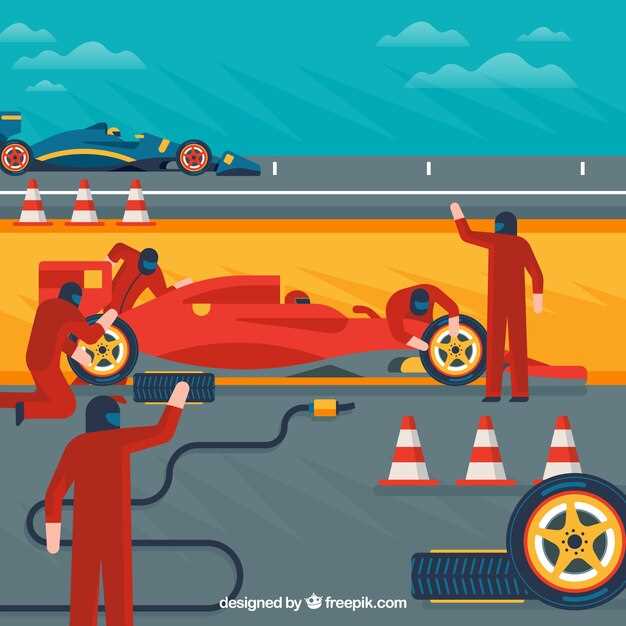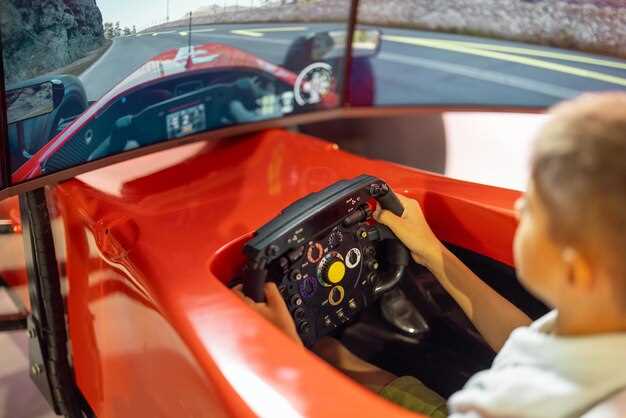
In the high-stakes world of motorsport, the importance of wiring cannot be overstated. A well-designed electrical system is crucial not only for performance but also for the safety of the driver and the integrity of the vehicle. The harness serves as the central nervous system of a race car, managing power distribution and facilitating communication between critical components. Properly executed wiring ensures that every element functions efficiently, allowing the driver to focus on achieving optimal performance without distraction.
When constructing a race car, it is essential to prioritize the quality and arrangement of the wiring harness. Choosing the right materials and configurations can prevent failures that may arise during intense racing conditions. From the ignition system to the fuel management setups, every wire must be meticulously planned to eliminate interference and reduce weight, thereby enhancing the overall performance of the vehicle.
Additionally, safety considerations play a pivotal role in wiring design. A robust electrical system must include fail-safe mechanisms and redundancy to guard against potential failures. By integrating advanced wiring solutions, race teams can ensure that critical systems remain operational even in the face of adversity. This intricate balance between safety and performance is what sets a well-wired race car apart from the competition.
Choosing the Right Wiring Harness for Race Applications
In motorsport, selecting the appropriate wiring harness is critical for ensuring both safety and performance. A well-designed harness provides reliable electrical connections, decreases weight, and simplifies troubleshooting. Here are key factors to consider when choosing a wiring harness for race applications:
| Factor | Description |
|---|---|
| Material | High-quality, lightweight materials like PTFE and nylon are ideal for race applications. They provide durability and resistance to heat and abrasion. |
| Size and Configuration | Choose a harness that fits the specific dimensions and layout of your race car. Custom configurations may be necessary to optimize space and ensure proper routing. |
| Connector Types | Opt for sealed connectors to protect against moisture and dirt. Ensure compatibility with sensors and other electronic components used in the vehicle. |
| Heat Resistance | The harness should withstand extreme temperatures found in race conditions. Look for harnesses rated for high heat resistance. |
| Weight | Minimizing weight is essential in racing. A lightweight harness can enhance overall vehicle performance without compromising safety. |
| Ease of Installation | Simplified installation processes and pre-terminated connectors save time during assembly. Consider harnesses designed for easy maintenance and modification. |
| Safety Features | Ensure the harness includes features like overload protection and short-circuit prevention to enhance the safety of the electrical system. |
In summary, selecting the right wiring harness for race applications involves a careful evaluation of material, size, connector types, and other factors. An optimal harness not only supports the performance of your race car but also enhances safety measures crucial for competitive racing environments.
Understanding the Electrical Load Requirements in Racing

In the high-stakes environment of race car performance, understanding the electrical load requirements is crucial for both safety and efficiency. The electrical system must be meticulously designed to handle the demands placed on it during intense competition. Each component, from the engine management system to the lighting and telemetry, contributes to the overall load that the wiring harness must accommodate.
To achieve optimal performance, it is essential to calculate the total electrical load accurately. This involves assessing the power requirements of every electrical device used in the car. For instance, high-performance fuel pumps, ignition systems, and electronic control units (ECUs) can draw significant current. Additionally, accessories like data acquisition systems and communication devices can add to the load, necessitating a robust wiring harness capable of managing these demands.
The choice of wiring materials and gauge is also fundamental to ensure that the system can handle the electrical load without overheating or causing failures. Higher gauge wires generally allow for better current flow and reduce resistance, which is critical in a racing environment where reliability is paramount. Overloading the wiring can lead to insulation breakdown and, ultimately, catastrophic failures during a race.
Furthermore, protective measures should be incorporated into the wiring harness design to mitigate the risks associated with electrical shorts and moisture ingress. Shielding and insulation must be of high quality, particularly in areas exposed to extreme conditions. Proper routing and securing of wires will also help maintain the integrity of the harness throughout the race.
By carefully considering and understanding the electrical load requirements, race car builders can develop a wiring system that not only enhances performance but also ensures the safety of the driver and the vehicle. Attention to detail in the wiring harness design process ultimately culminates in a more reliable and effective racing machine.
Best Practices for Routing Wires in a Race Car
Routing wires effectively is crucial for both safety and performance in a race car. Proper wiring harness management ensures reliable operation of electrical systems while minimizing the risk of electrical failures or hazards during a race.
-
Plan Your Wiring Layout:
Before starting, create a detailed diagram of the wiring layout. Identify the locations of key components such as the battery, ECU, sensors, and other electronic devices. This planning stage helps in minimizing excess wiring and simplifies future maintenance.
-
Use Quality Materials:
Invest in high-quality wires and connectors. Choose wires with adequate insulation to prevent shorts and failures due to heat and vibration. Additionally, select connectors that can withstand the conditions of racing environments.
-
Route Wires Neatly:
Keep wiring as neat and tidy as possible. Use appropriate wire looms or ties to bundle wires together, reducing the risk of tangling or snagging. Avoid sharp bends and keep wires clear of moving parts.
-
Avoid Electrical Interference:
Route power wires away from signal wires to minimize the risk of electromagnetic interference. Use twisted pairs for sensitive signal wiring and shielded cables where possible to improve signal integrity.
-
Secure Wiring Harnesses:
Ensure that wiring harnesses are securely fastened to the vehicle’s chassis. Use appropriate clamps and ties to prevent movement which could lead to wear and potential failures.
-
Provide Strain Relief:
In areas where wires transition to connectors or move with suspension parts, incorporate strain relief. This prevents unnecessary stress on the wires and connectors, reducing the chance of breakage.
-
Regular Inspection:
Consistently inspect your wiring harness to look for signs of wear, fraying, or damage. Early detection can prevent failure during a race and ensure optimal performance.
-
Document Changes:
If modifications are made to the wiring or harness, document the changes. Keeping a record helps in troubleshooting and makes future repairs easier.
By following these best practices for routing wires in a race car, you can enhance the safety and reliability of the vehicle’s electrical system, ensuring better performance on the track.
Implementing Effective Grounding Techniques for Safety
In the realm of race car wiring, establishing a reliable grounding system is paramount for safety and performance. Proper grounding techniques can minimize electrical interference, ensure consistent system operation, and enhance the overall reliability of critical race components.
First and foremost, the ground point selection is crucial. Grounding should be centralized to a solid metal part of the chassis to maintain a low-resistance connection. This location should be free of rust, paint, or debris to guarantee optimal conductivity. Using a star grounding technique, where each wire connects directly to a single point, can significantly reduce issues related to ground loops, which may cause erratic behavior in the car’s electronics.
Additionally, using adequately sized grounding wires is essential. Ground wires should match or exceed the size of the power wires they are paired with, considering the potential current flow. This helps prevent overheating and potential failure of the grounding system under high load conditions, typical in race scenarios.
Regular inspection of grounding connections is vital to ensure their integrity throughout the racing season. Over time, vibrations and the harsh racing environment can loosen connections, leading to unreliable performance or safety risks. Adding locking connectors or vibration-resistant fasteners can provide added security to these critical connections.
Furthermore, incorporating redundancy into the grounding system can enhance safety. Utilizing multiple ground paths for critical components can ensure that even if one path fails, others will still maintain functionality, protecting vital electronics necessary for race operation.
Lastly, implementing the use of shielding for sensitive wiring can protect against electromagnetic interference. Grounding shields effectively can prevent noise in data signals, ensuring that telemetry and onboard systems operate smoothly during races.
Integrating Safety Features into the Wiring System
In the competitive world of racing, every detail counts, especially when it comes to safety. The wiring system plays a crucial role in enhancing both performance and protection for the driver. One of the primary considerations in designing a wiring harness is ensuring that it can withstand the harsh conditions typically encountered on the racetrack, while also providing reliable safety features.
The first step in integrating safety features is to employ high-quality materials for the wiring harness. Using heat-resistant and abrasion-resistant materials helps protect the wires from damage caused by extreme temperatures and physical wear. Moreover, implementing proper insulation techniques minimizes the risk of short circuits, which can lead to catastrophic failures during a race.
Another vital element is the inclusion of fail-safe mechanisms within the wiring system. This can involve integrating disconnect switches that allow for quick power shutdown in emergency situations. Placing these switches in accessible locations ensures that drivers and pit crews can respond swiftly if a failure occurs.
Incorporating dead-man switches into the wiring design adds an extra layer of safety. This device automatically cuts off power if the driver becomes incapacitated, preventing further hazards on the racetrack. Additionally, utilizing circuit breakers instead of fuses can provide immediate protection against electrical overloads, reducing the risk of fire or electrical malfunctions.
Furthermore, adding telemetry systems wired into the harness allows real-time monitoring of critical parameters such as temperature, voltage, and fuel levels. By analyzing this data, teams can proactively address potential issues before they escalate. High-voltage systems should also be clearly labeled and properly shielded to avoid accidental contact.
Overall, integrating robust safety features into the wiring system not only optimizes the performance of the race car but also prioritizes the driver’s well-being. A well-designed harness, combined with advanced safety mechanisms, ultimately contributes to a more competitive and secure racing environment.
Common Troubleshooting Tips for Race Car Wiring Issues

When experiencing wiring issues in race cars, a systematic approach can help identify and resolve the problems quickly. Start by examining the wiring harness for any visible signs of damage, such as frayed wires or loose connections. A damaged harness can lead to intermittent electrical problems, which are often difficult to diagnose.
Next, verify that all connections are secure. Loose connections can result in power loss to critical components, affecting performance and safety. Pay special attention to grounds, as a poor ground connection can cause erratic behavior in electronic systems.
Utilize a multimeter to check for continuity in the wiring harness. This will help identify any breaks in the circuit that could be causing issues. Additionally, measure voltage at various points in the circuit to ensure that components are receiving adequate power.
Inspect the fuse and relay areas; a blown fuse may suggest an underlying issue in the circuit. Replace any faulty fuses and test the relays to confirm they are operational. If a relay is suspected to be malfunctioning, directly bypass it to determine if that resolves the issue.
Check for interference from other systems. Race cars often have numerous electronic components that can affect each other’s performance. Ensure that your wiring harness is properly shielded and routed away from sources of interference such as high-voltage lines or motors.
Document any changes or repairs made during the troubleshooting process. Keeping a detailed record can help you trace back issues if they arise again and can be invaluable for future reference.
Lastly, if problems persist despite thorough troubleshooting, consider consulting with wiring professionals who specialize in race car electrical systems. Their expertise can provide insights that may not be immediately apparent and help to ensure optimal performance and safety on the track.




